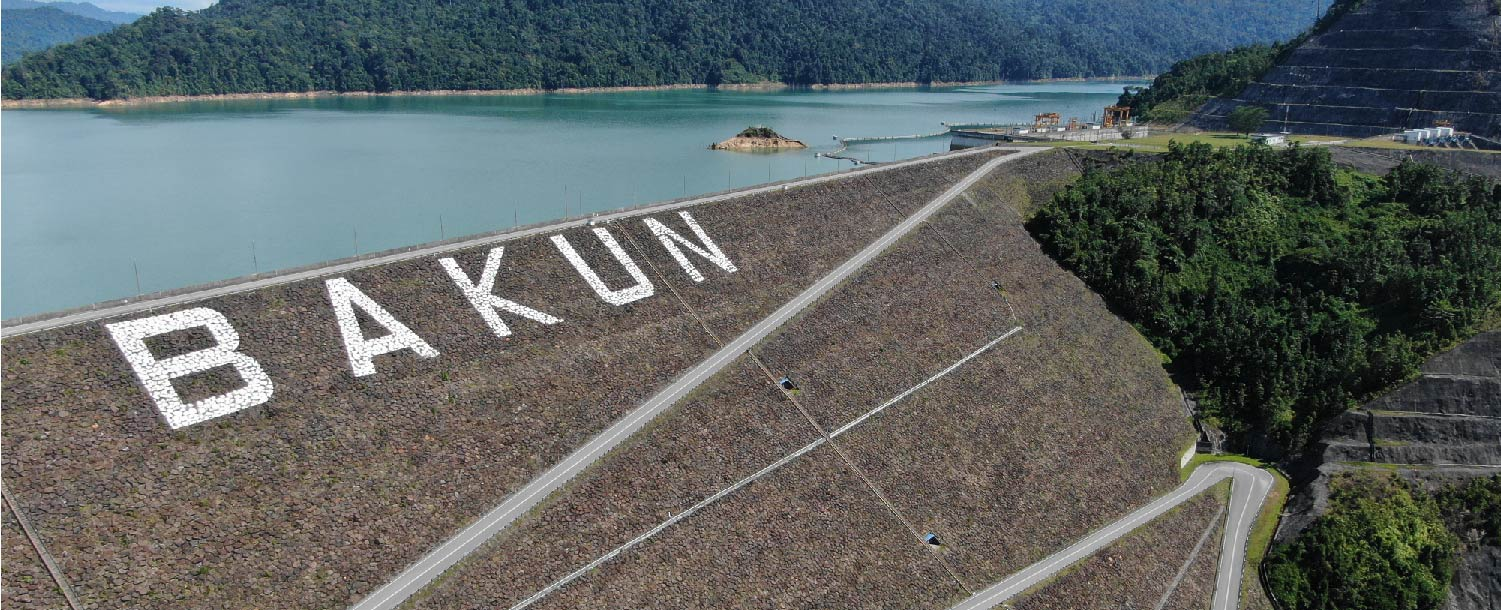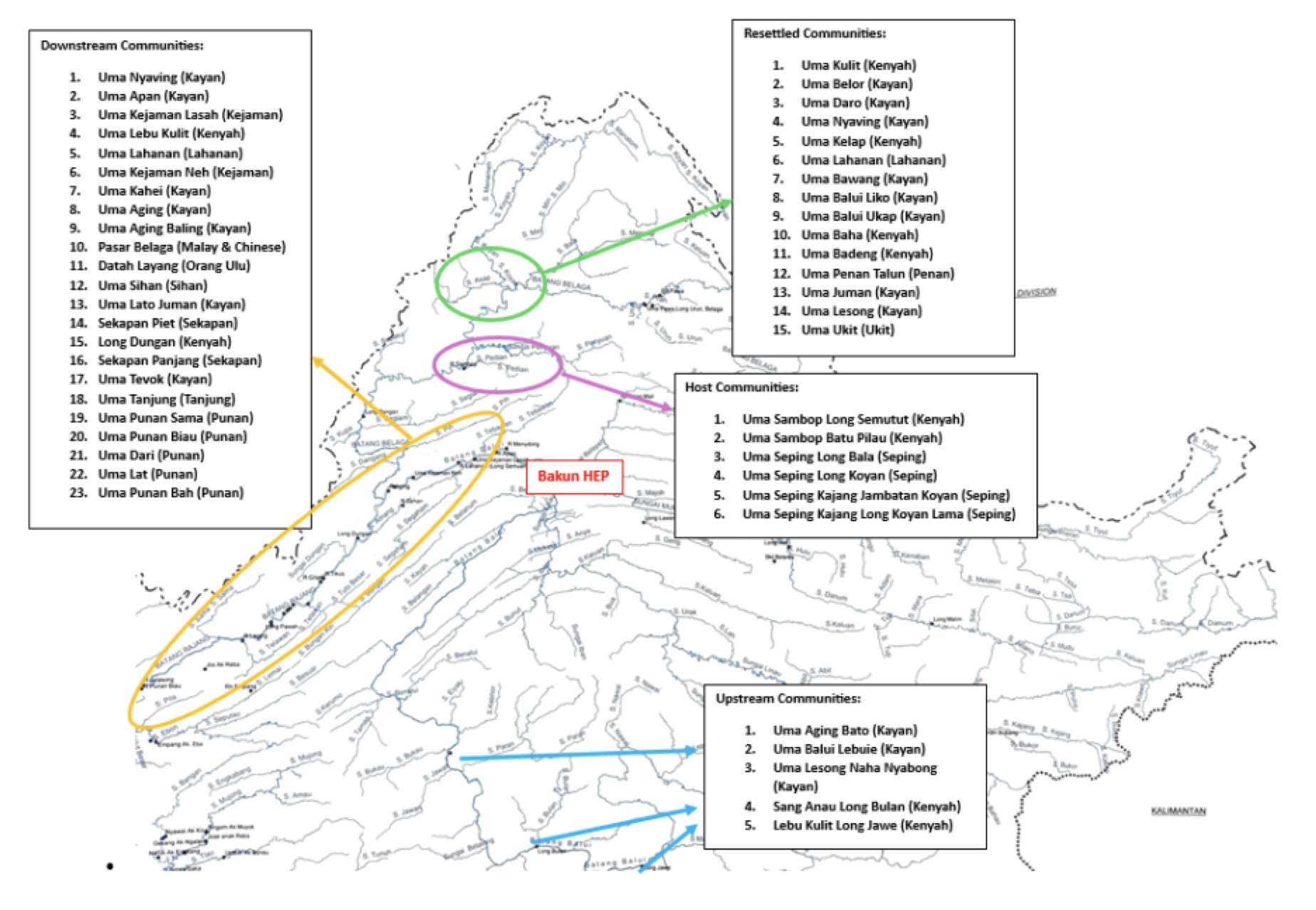

BAKUN HYDROELECTRIC PLANT
COMMUNITIES
Sarawak Energy is managing our business to minimise any negative impacts of our operations while maximising the positive contributions we make to our community. We are guided by the following principles:
- We manage the social impacts associated with the operations of Bakun HEP tactfully and compassionately. Our strategy is to fulfil our social commitments by avoiding, minimising, mitigating, and compensating for any social impacts resulting from our hydro operations.
- Livelihoods and living standards impacted by the project have improved compared to pre-project conditions for the affected communities. Our commitments to these communities have been fulfilled, and properties, assets, and resources are protected from any infrastructure safety risks.
- The dignity and human rights of those physically displaced have been respected, and these matters have been handled in a fair and equitable manner.
- The livelihoods and standards of living for both resettled and host communities have improved, and the commitments made to them have been fulfilled.
- Bakun HEP continuously respects the rights, needs, culture, lands, knowledge, practices, and natural resource-based livelihoods of indigenous peoples throughout the project's lifecycle.
- Physical cultural resources are identified, their significance is understood, and measures are in place to address those deemed of high importance.
- Stakeholders are identified and engaged on issues of interest to them, with communication and consultation processes duly performed to maintain positive stakeholder relations.
To learn more, access the Bakun HEP Community Management Plan (Operation Stage) here.


Location of Bakun Dam and Overall Bakun Project Affected Communities
Bakun Resettlement Scheme Fact Sheet:
- 15 longhouses with toilets, electricity, sports facilities, religious institutions and clean water supply
- 157 kilometers of paved road access to nearest town (Bintulu)
- 1 Community Hall
- 1 Mini Stadium
- 2 Primary School and 1 Secondary School
- 2 Clinics
- 1 Subdistrict Office
- Government Agencies (Police Station, Post Office, Labor Office, Agriculture Office, MPOB etc.)
- Religious Centres
- Wet Market
- Shop lots
- 2 Communication Towers
Downstream Communities
Though impacted by the construction of Bakun HEP, the local communities living downstream of the dam and within the Belaga River were not relocated. Two Kayan longhouses nearest to the dam site are Long Mejawah - Uma Nyaving and Uma Apan followed by Long Segaham - Uma Kejaman Neh, Long Mitik - Uma Kulit, Long Semuang - Uma Lahanan, Uma Kejaman Lasah, Uma Kahei, Uma Aging, Belaga Town comprising two Kampung Melayu & Chinese communities), and other villages belong to Kayan, Kenyah, Kajangs (Sekapan, Punan & Tanjong) below Belaga town all the way downstream to the Punan Ba area.
Other communities residing within the Belaga river basin also include the Kenyahs, Sepings & Penans.
Upstream Communities
Meanwhile on the upstream of the Balui River, a Kenyah longhouse with a population of about 1,000 people – Uma Badeng in Long Busang, Belaga – was not relocated to the Bakun Resettlement Scheme as it was projected that the flood water level would not reach the longhouse.
In addition, some residents from the relocated longhouses such as Uma Kulit Long Jawe and Uma Balui Ukap have chosen to stay put by moving to higher ground within their respective communal territorial domains. There are currently three longhouses located upstream which are registered under the Belaga District Office – they are Uma Kulit Long Jawe, Uma Balui Lebuie and Naha Jale at Long Kebuho which were both previously known as Uma Balui Ukap.
Sarawak Energy, as a socially responsible corporate entity, also extends our corporate social responsibility efforts to these upstream communities to meet their needs.
Host Communities
Host communities are pre-existing local communities located along Batang Belaga, where project-affected communities are relocated to. There are pre-existing communities within the resettlement areas of Bakun HEP, identified as host communities. The host communities who have lived in Sungai Asap for many generations are the Kenyah Sambop of Long Semutut and Batu Pilau, and the Seping of Long Koyan and Long Bala.
Indigenous Peoples’ Plan (IPP) for Bakun HEP
Sarawak Energy initiated a study in December 2024, engaging a consultant to develop an Indigenous Peoples' Plan (IPP) for the Bakun HEP. The study aims to assess and mitigate the impacts of the Bakun HEP’s operation on local indigenous communities. It focuses on identifying affected communities, mapping their geographical distribution and understanding their socio-economic conditions, cultural practices and land rights.
This comprehensive assessment involves collecting baseline data on livelihoods, education, health and infrastructure while evaluating the project’s compliance with national and international Indigenous rights frameworks. Through continuous engagement with indigenous communities, local authorities, and relevant parties, the study ensures adherence to Free, Prior, and Informed Participation (FPIP) processes. The objective is to develop mitigation strategies and community development initiatives that respect the rights and needs of indigenous peoples.
The summary of the scope of works is as follows:
No. | Scope | Objectives | Description |
1. | Identification of Indigenous peoples | Identify and document affected indigenous communities (Upstream, Bakun Resettlement Scheme, Downstreamand Host Community), including their socio-economic profiles.
| This task involves identifying and documenting affected Indigenous communities, their rights,and geographical distribution. A comprehensive socio-economic baseline and demographic profile will be developed to understand their status and needs. |
2. | Review of Legal and Institutional Frameworks | Review, assess compliance and conformance with national and international indigenous rights frameworks. | This involves a thorough review of relevant national and international laws and policies to ensure compliance with indigenous rights frameworks. It also includes evaluating local governance structures to align them with Sarawak Energy’s corporate objectives and PPG requirements. |
3. | Impact Assessment and Analysis of Rights at Risk | Conduct a Bakun-specific analysis of indigenous peoples' rights, examining how their rights have been and continue to be affected by Bakun HEP’s operations and activities, with detailed assessments for each longhouse.
| This task entails analysing the specific impacts of the Bakun HEP project on indigenous peoples' rights. It includes assessing risks such as loss of livelihoods, cultural heritage, environmental degradation and access to services, with a detailed analysis for each longhouse. |
4. | Stakeholder Engagement and Free, Prior and Informed Participation (FPIP) | Ensure inclusive and transparent communication while adhering to FPIP compliance. | This involves engaging with indigenous communities and relevant parties through surveys, presentations and reports. It ensures that consultations are meaningful and that the input and consent of local authorities and indigenous peoples are incorporated into the development of management measures. |
5. | Mitigation Measures | Develop mitigation strategies and community development initiatives that respect the rights and needs of indigenous peoples. | This task focuses on developing and implementing strategies to mitigate the project’s negative impacts on indigenous communities. It includes identifying and promoting community development initiatives that align with the EPU Resettlement Masterplan 2050 for sustainable and inclusive growth. |
6. | Monitoring and Evaluation Framework | Establish indicators and metrics to assess the plan’s effectiveness. | This involves establishing a framework for the continuous monitoring and evaluation of the Indigenous Peoples’ Plan (IPP). It includes recommending participatory monitoring strategies that involve Indigenous communities to ensure transparency and accountability. |
To learn more, access the Bakun Indigenous Peoples’ Plan – Inception Report here.